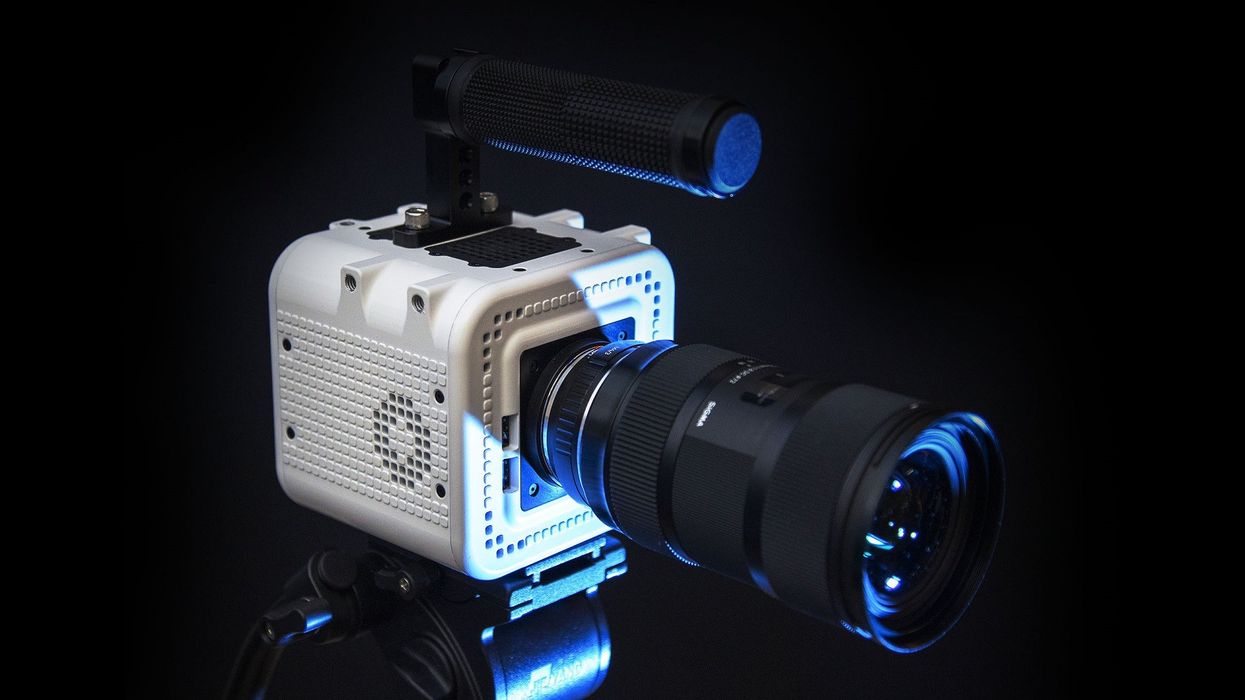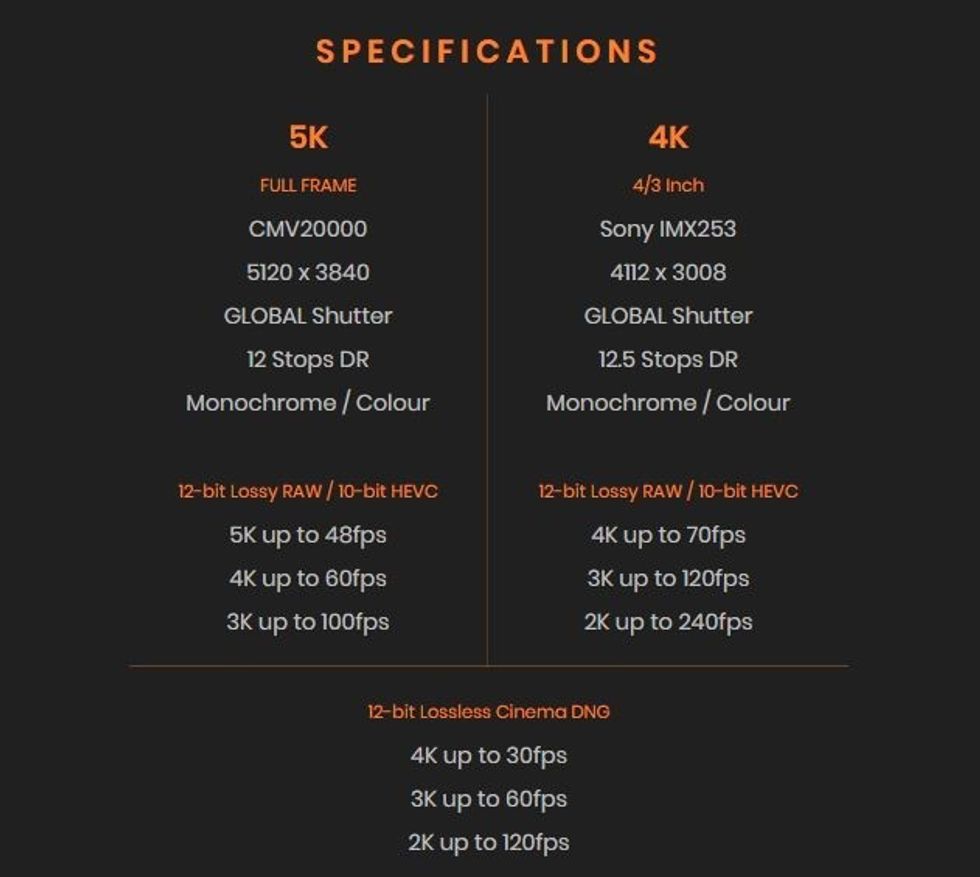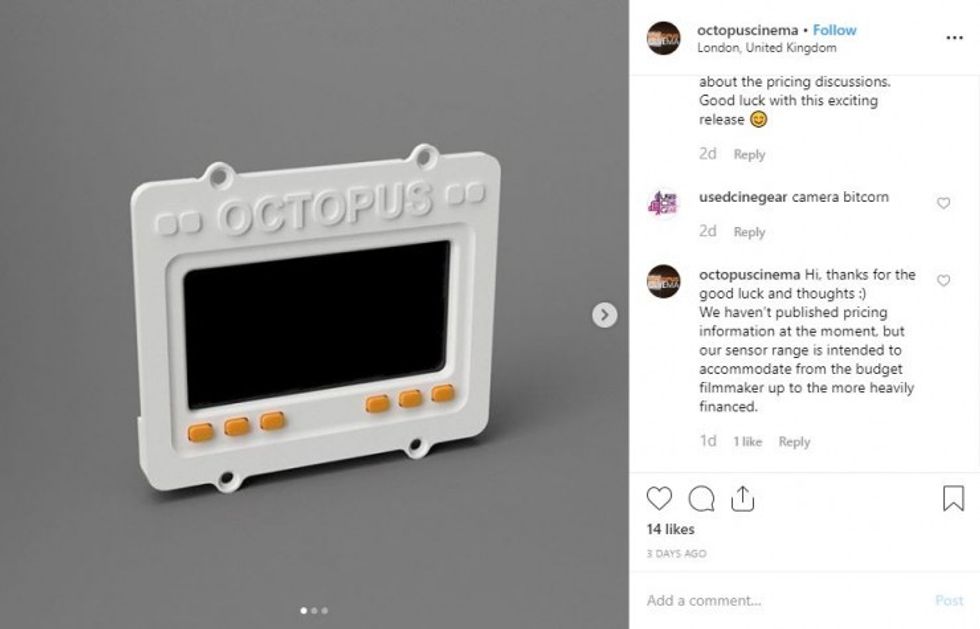The Octopus Camera: Customize to Your Heart's Content
Octopus Cinema’s debut open-source prototype offers an open platform with interchangeable parts.

London-based company Octopus Cinema is cooking up a camera that will interest fans of open source tech. The Octopus Camera is a customizable rig which runs on Linux and supports a variety of sensors from XIMEA, with features including “full-frame 35mm, Global Shutter, native Monochrome and more.”
The company’s official website only lists specs for XIMEA sensors, but according to Cinema 5D’s Jakub Han, the Octopus will also support modules from Sony and CMV in the future.
Of the available XIMEA sensors, Octopus has released specs for two: full frame and 4/3 inch. Both can shoot 12-bit Lossless Cinema DNG in 4k at up to 30 frames per second, and both offer 10-bit HEVC for faster frame rates at varying resolutions. Additional recording formats can be added trivially with the SDK through Libavcodec or 3rd party libraries. Full specs below:

In addition to sensors, Octopus users can also swap out the camera’s Intel NUC processing board and other components as upgrades become available. The camera can record to both CFast 2.0 and internal SSDs and offers both “SATA III and USB3 for write speeds over 350MB/s.” With a body made from milled aluminum, the Octopus weighs in at 900 grams and measures 110 x 110 x 110mm. The 4/3 inch and full frame sensors use a Micro Four Thirds (Passive) mount and Canon EF (Active) mount, respectively. According to Russell Newman, Octopus Cinema's Lead Engineer and Founder, "In the current design of the camera, the mounts are removable components and we would like to offer in the future a choice of mounts."
Newman went on to explain the product's intended market:
"We are targeting small areas of multiple markets - specialist sensors such as native monochrome sensors for small independent production houses after a specific look/style or a programmable camera capable of augmented reality and other custom in-camera processing for assistance with VFX work. We would like to create a scenario where a camera owner has an upgrade path for the camera. With sensor technologies constantly evolving, we want to move away from the sell/discard and purchase cycle that makes staying on top of technology very hard financially."
The company hasn’t released any pricing information to date, but in reply to an Instagram comment on Thursday, they wrote, “our sensor range is intended to accommodate from the budget filmmaker up to the more heavily financed.”
Some budget filmmakers might benefit from the option to use native monochrome sensors without investing in a separate rig. These specialty sensors achieve higher image quality by skipping the pixel interpolation required for a color image, which allows each pixel to appear at 1:1 in the recorded media. To use one of these sensors now, you need to buy (or rent) a dedicated monochrome camera, but with the Octopus, you could just swap out the sensor.
Octopus Cinema has posted a handful of monochrome test clips from the full frame and 4/3 inch sensors on their Vimeo channel. Here’s one shot with the 4/3 inch:
Without pricing details, it’s difficult to tell whether sensor swapping would actually be a more budget-friendly monochrome option than a dedicated rig. XIMEA doesn’t list sensor prices on its website (just an email address for the sales team) and since most rental houses don’t offer individual sensors, it might still be more affordable to rent a monochrome rig for those specialty shoots.
But damn, those images are pretty…
We won’t be able to get our hands on the Octopus Camera for a while: according to their website, it won’t be available until summer of next year. Until then, we’ll just have to wait.
In the meantime, what interests you about this camera? How would you put this level of customization to work? Let us know in the comments.














